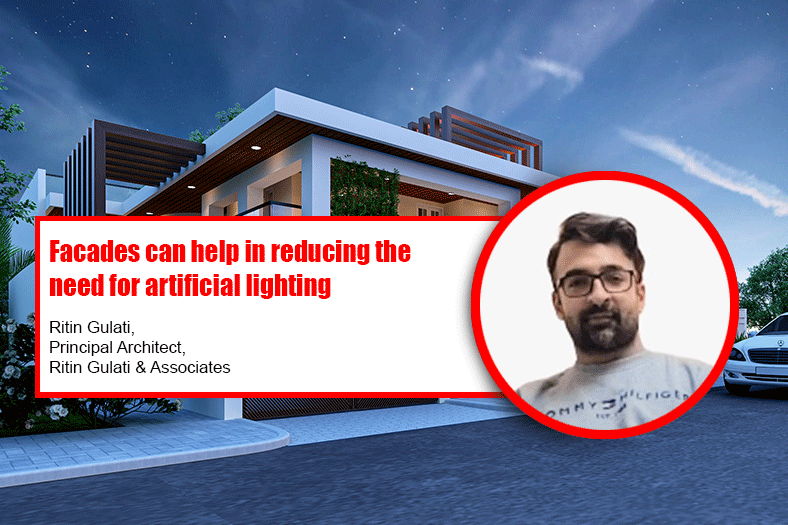Facades can help in reducing the need for artificial lighting

Facades incorporate bigger fenestrations considering the sun path, which helps in minimizing the use of artificial lighting. Further, it helps in fabricating efficient building interiors and thereby minimizing the energy consumption, says Ritin Gulati, Principal Architect, Ritin Gulati & Associates.
What is the importance of facade cladding in contemporary times?
The foremost merit of using facade cladding is that it has an extra layer that safeguards a building from extraneous damage while demanding little to no maintenance. It ensures that the mechanical framework of the building remains sound, as it will be able to acclimatize to changing weather conditions. Being factory-made, the lion’s share of facade cladding is made of materials that last longer and are easier to customize as well. The appearance of cladding chips into the aesthetics of the facade as well.
How can the shape and the form of a facade aid energy efficiency in a building?
The shape of a building is a significant aspect to foster its energy efficiency. Facades incorporate bigger fenestrations considering the sun path, which helps in minimizing the use of artificial lighting. The heat absorption coefficient of the building can be determined knowing the colour and form of the facade. Further, it helps in fabricating efficient building interiors and energy consumption.
When it comes to the choice of material for facades, which materials can offer maximum energy efficiency?
Materials that offer maximum energy efficiency are PVC cladding and wooden cladding. The former is easier to install, completely termite-free, heat resistant that even makes them more durable. It requires the least maintenance, which proves them to be cost-effective as well. Another alternative to achieve a good amount of energy efficiency could be glass but its expenses are higher than other cladding materials.
What impact do buildings with facade have on the adjacent building, is there a reason to worry, if yes how can it be addressed/prevented?
The surface attributes of building facades have ramifications for the thermal performance of the buildings and might influence thermal comfort conditions for adjacent buildings as well. Besides that buildings with a facade do not impact the adjacent building unless it has a very reflective and heat-absorbing surface.
Kindly shed some light on one project whose facade you find inspiring.
The facade for the villa at Faridabad in Haryana was awe inspiring for us to work with. Lighting design was the prime focus in this project. Not only natural but artificial lighting design is also given equal centre of attention to defining the profile of the entire building form. We do believe that the facades of any building should be extensible and responsive to human needs, climatic conditions while fulfilling the need to minimize energy consumption.
The facade design is kept minimalistically linear that comprises bands and wooden pergolas. The consolidated design approach of putting together both aesthetics and functionality helps to thrive the architectural form and results in an “intelligent skin”. Incorporating the former fact in the design of the project, the colour palette has been kept neutral while balancing the whites with browns and greys. The natural greens complement the facade as well as enhance the microclimate. Fenestration has been kept large that proves the facade of the building highly energy efficient.
Cookie Consent
We use cookies to personalize your experience. By continuing to visit this website you agree to our Terms & Conditions, Privacy Policy and Cookie Policy.









